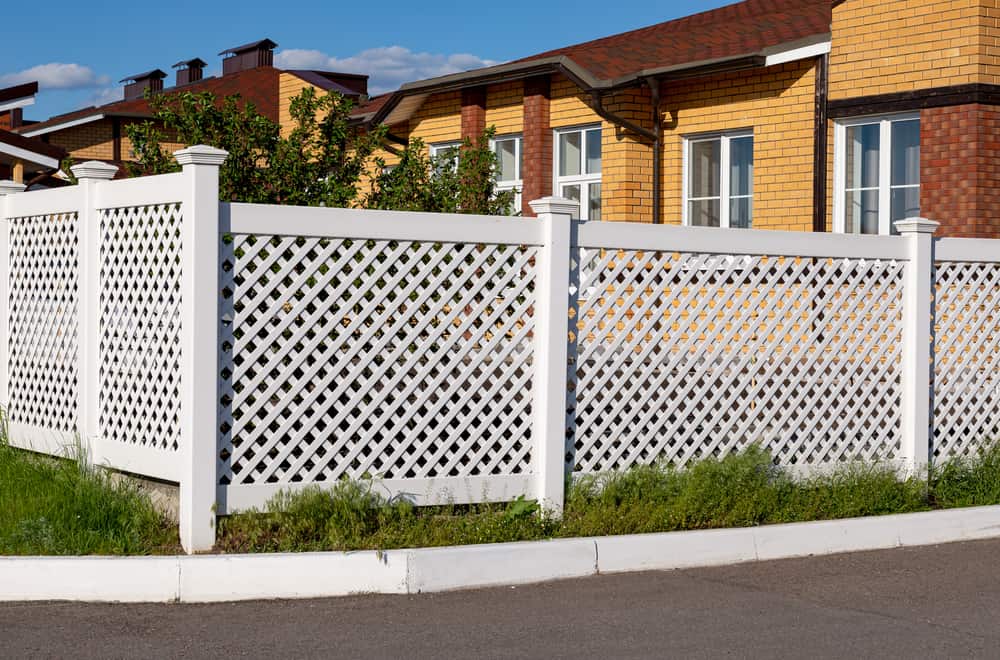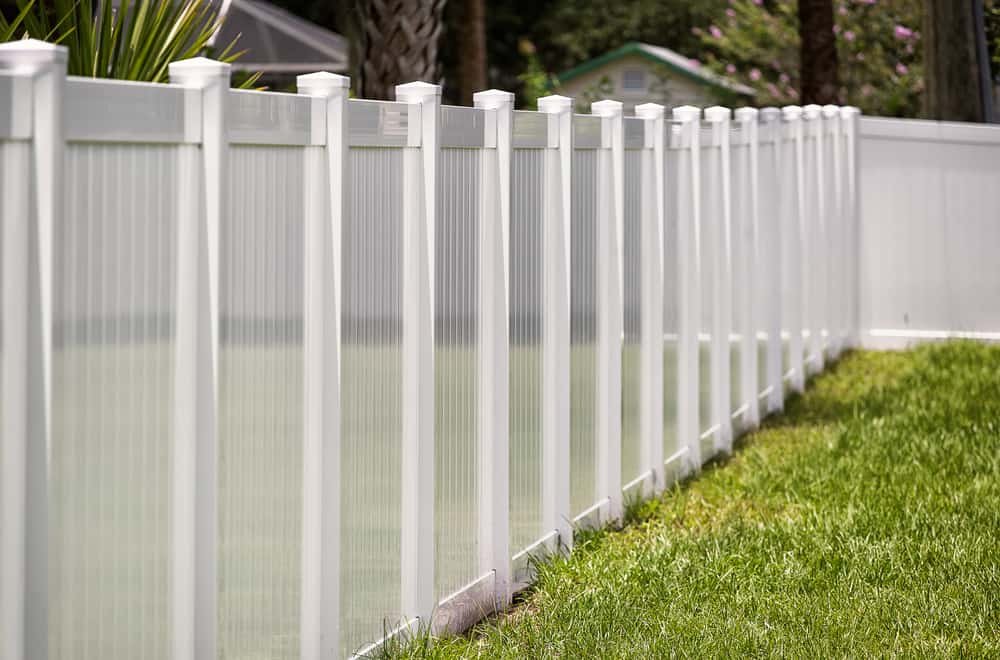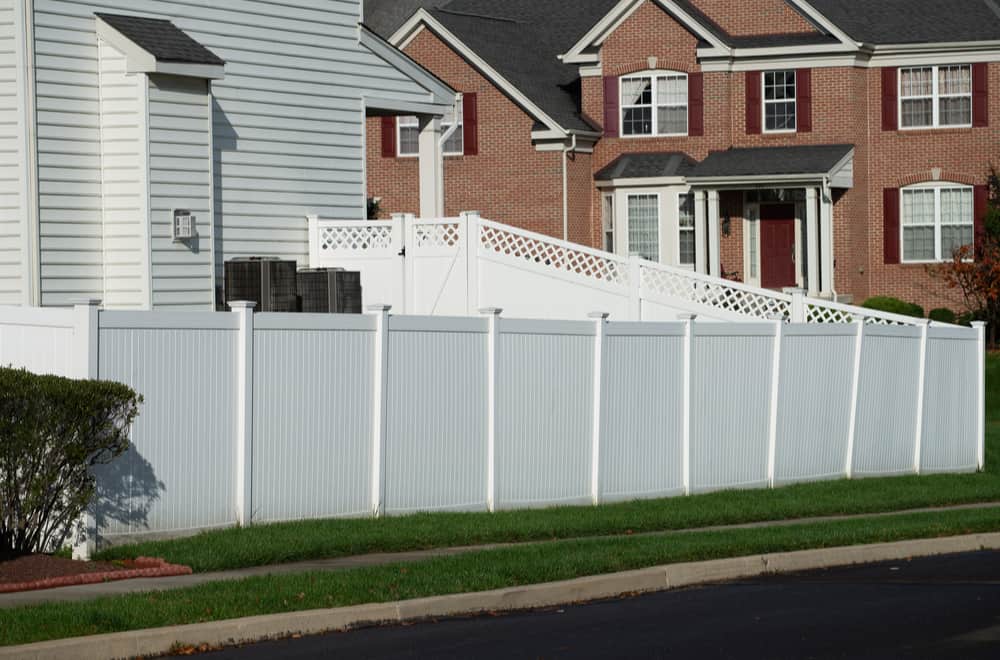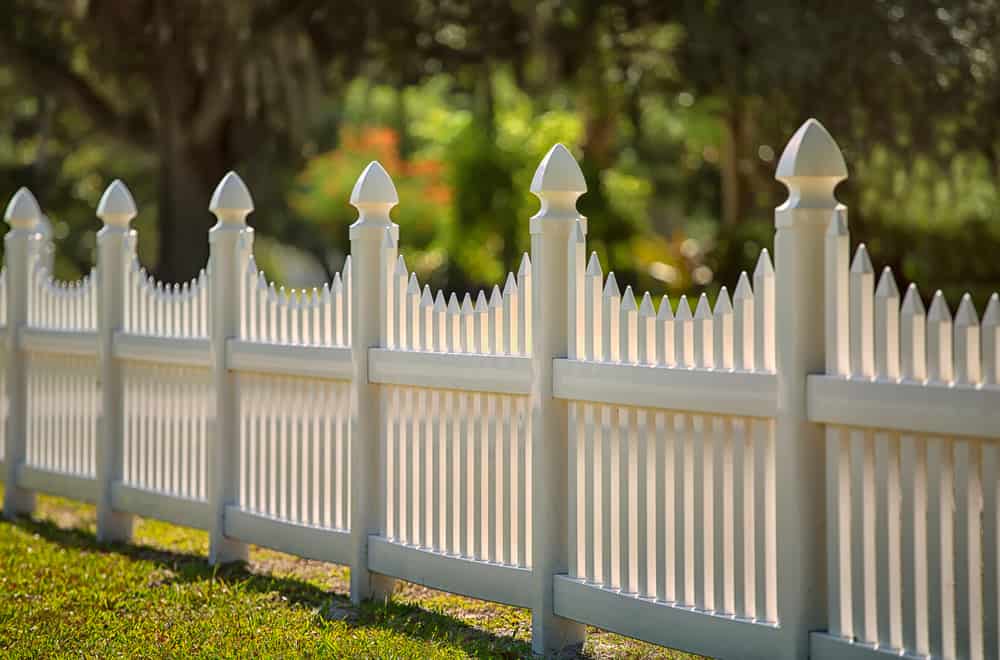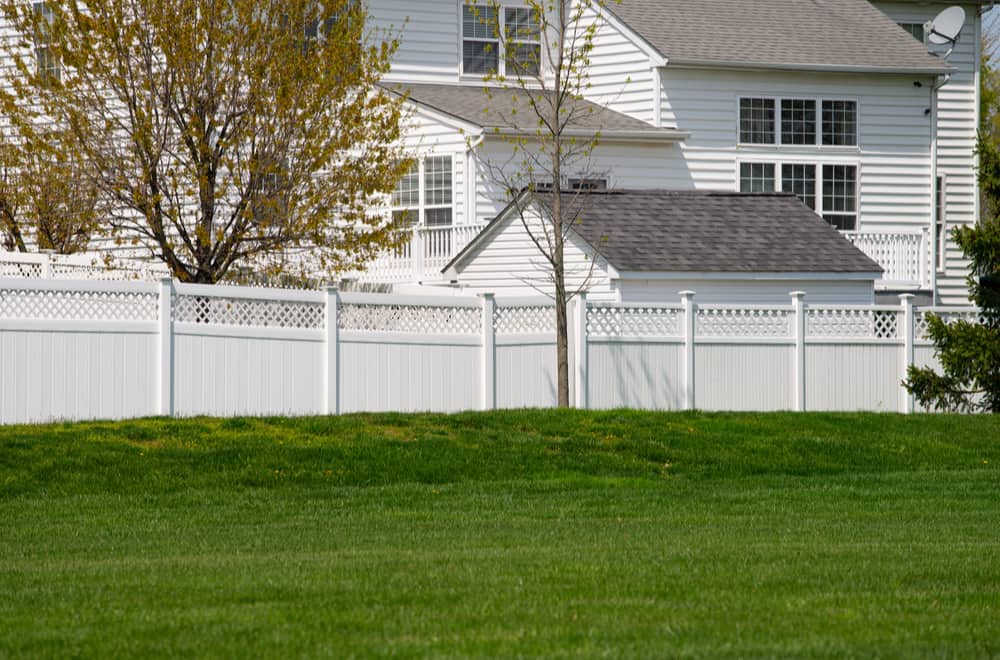PVC vinyl fences were first introduced in the early 1980s to offer ranchers and farmers a low-maintenance yet durable fencing solution. Over time, the material gained popularity and was eventually introduced as an option for residential fences, too.
Homeowners appreciate the material’s durability and resistance to elements, the almost inexistent maintenance, and the bountiful choice of styles and colors.
But all that glitters is not gold, and vinyl fences also have their drawbacks. With this in mind, let’s see what the PVC vinyl fence reviews say: is it worth installing?
Table of Contents
What Is PVC Vinyl Fencing?
PVC vinyl fencing is fencing made of polyvinyl chloride, a type of plastic known for its durability, resilience, and relatively low cost.
Why PVC vinyl, you might wonder. Aren’t they the same thing? Although PVC and vinyl are two terms used interchangeably in the fencing industry, the truth is that PVC is only a type of vinyl. Other types include polyvinyl acetate, polyvinyl alcohol, and polyvinylidene chloride. That said, it is safe to assume that all vinyl fences are made of PVC.
This material is often preferred over wood because of its durability and low maintenance. You can also pick from a variety of styles and colors, making vinyl fencing a versatile option for homes, ranches, and farms alike.
Vinyl Fence Types
There are four main types of PVC vinyl fence panels:
- Picket fence: One of the most popular fencing types, picket fences are a staple of American homes. This type of fence was traditionally made of wood, and most vinyl panels in this style replicate the traditional white wood panels. PVC picket fencing is made up of 6-foot or 8-foot panels with two horizontal rails and pickets of various widths. This type of fence doesn’t offer much privacy but is an excellent choice for traditional homes.
- Semi-privacy fence: These fences are great for those who want some privacy but don’t mind slight openings in their fencing panels. Featuring the same design on both sides, these panels consist of alternating rails and planks across the back and front. Both sides look exactly alike and offer some privacy while allowing good screening between neighbors or between private property and public space. Aside from residential use, semi-privacy fences are also preferred by commercial properties, such as restaurants.
- Privacy fence: Similar to the semi-privacy but without any gaps between the planks, these fences are ideal for those who want utmost privacy. This is one of the most popular types of vinyl fences, available in a wide range of styles and colors. Most panels are 8-foot wide and 6-foot tall, making installation a cinch. As decorative elements, many manufacturers add lattice accents or pickets to the top.
- Ranch rails: As the name suggests, this type of fence is typically found on farms and ranches, although you may also find it on larger estates. Styles include panels with two, three, or four rails along with posts and are generally used to keep animals contained. The main advantage of this fencing type over traditional wood ranch rails is the increased durability of the material. Because vinyl doesn’t splinter, this fencing type is safer for pets, horses, livestock, and children.
Popular Vinyl Fence Colors
Like vinyl siding, PVC vinyl fences come in a wide range of colors. Not all of them are popular, though. Depending on the style you wish to achieve, you can pick from:
- White: The definition of elegance, white vinyl fences work great with light and dark-colored houses alike. This color is particularly popular for picket-style fences, although you can opt for white privacy or semi-privacy fence, too. Dirt and grime will be more visible on this color compared to other hues, so you’ll likely have to clean your fence at least twice a year.
- Gray: A common option for modern homes, gray fences may not require as much cleaning as a white fence. Hues vary from light gray and off whites to slate. A darker shade will usually work well with white or light-color siding, whereas a lighter-colored fence will complement a bolder siding shade. To add some dimension, you could even opt for gray panels with white posts.
- Woodgrain: If you aim for a rustic or country chic effect, wood grain vinyl panels are your best bet. Like real wood, you can pick from multiple shades and grain styles. With this style, you can enjoy the natural lumber look without maintenance.
PVC Fencing Pros and Cons
Advantages
- Attractive appearance: Although a fence primarily serves as a barrier, an attractive fence can boost your property’s curb appeal. PVC vinyl fences are available in several classic colors and modern options alike. Moreover, the variety of designs makes it easy to find a fence that complements your exterior.
- Low maintenance: Unlike wood or metal fences that need periodical staining or painting, vinyl fences are very low maintenance. PVC resists UV rays and elements – the color may slightly fade in time, and the material could become brittle, but it will usually take decades for this to happen. As such, all you have to do to keep it in pristine conditions is wash off the dirt and grime with a power washer or garden hose when needed.
- Durability: Another important advantage of vinyl is its durability. Wood fences can rot, split, or crack in time. Metal fences can rust. Vinyl, on the other hand, is impenetrable to pests, can withstand excessive moisture, and won’t be subject to mold or mildew either. Most vinyl panels are also fire-resistant.
- Safer for kids and pets: In its finished state, vinyl isn’t toxic to people or animals. Thus, it is a safe choice for families with kids or pets, as well as ranches and farms. Unlike vinyl, wood is often treated with chemicals to safeguard the fence from weathering, and these substances could be toxic.
- Easy to install: Vinyl fencing consists of interlocking panels that are very easy to install, often without fasteners. This feature makes vinyl fences a popular choice among DIY enthusiasts.
Disadvantages
- High initial cost: From all fencing options, PVC vinyl fences are the most expensive upfront – a vinyl fence can cost you between $25 and $40 per foot, whereas wood and metal fences rarely cost more than $20 per foot. However, you won’t have to repaint or treat the material every year, so the costs are easy to recoup.
- Hard to repair: Like most plastics, PVC can deteriorate over time. When this happens, you’ll most likely have to replace the entire damaged section.
- Can be sensitive in extreme temperatures: Although vinyl is a very resilient material, constant exposure to extreme heat or cold could damage the structure over time. For this reason, vinyl fencing might not be the best solution if you live in a very cold or very hot climate area.
How Long Does PVC Fencing Lasts?
A typical vinyl fence has a life expectancy of about 20-30 years. How long your vinyl fence will actually last depends on the material quality – premium vinyl can last over 40 years, whereas cheap vinyl panels may deteriorate in 10 years. A simple way to estimate life expectancy is by checking the warranty.
Quality vinyl fences come with 20-year to lifetime warranties. If the manufacturer’s warranty is shorter than 20 years, the vinyl is usually of poorer quality, and you can expect it to deteriorate faster.
How Much Does PVC Fencing Cost?
As mentioned above, PVC fencing is the most expensive upfront. Short or mid-height picket-style panels are generally the cheapest, costing around $20 per linear foot. Taller panels in semi-privacy or privacy styles can cost as much as $40 per linear foot.
On average, you can expect to pay about $3,600 for a new vinyl fence. To that amount, you should add the installation costs (unless you’re doing it yourself). Labor costs around $42 per hour on average.
Add-ons, such as decorative elements, woodgrain textures, and gates, can further drive up the cost. Last but not least, you should also consider the costs of any necessary permits before calculating how much you need for the investment.
Is It Worth It?
Whether PVC vinyl fencing is worth it or not is up to you. Would you rather spend more upfront but not bother with the maintenance, or would you prefer a cheaper upfront cost? For us, PVC vinyl fences are more than worth the investment.
Conclusion
PVC vinyl fences offer an alternative to traditional materials, such as wood and metal. These fences are resistant, durable, and require low maintenance. They cost more upfront, but recouping the investing is easy, considering the lack of maintenance.
Keeping the fence in good conditions is as easy as pie. All you have to do is to wash off the dirt and grime. Repairing a damaged panel could be expensive, but the life expectancy of this material is superlative. The only thing to keep in mind is that extreme temperatures could damage it faster.
With this in mind, all you have to do is decide whether vinyl fencing suits your needs. Does it? Tell us in a comment below.
